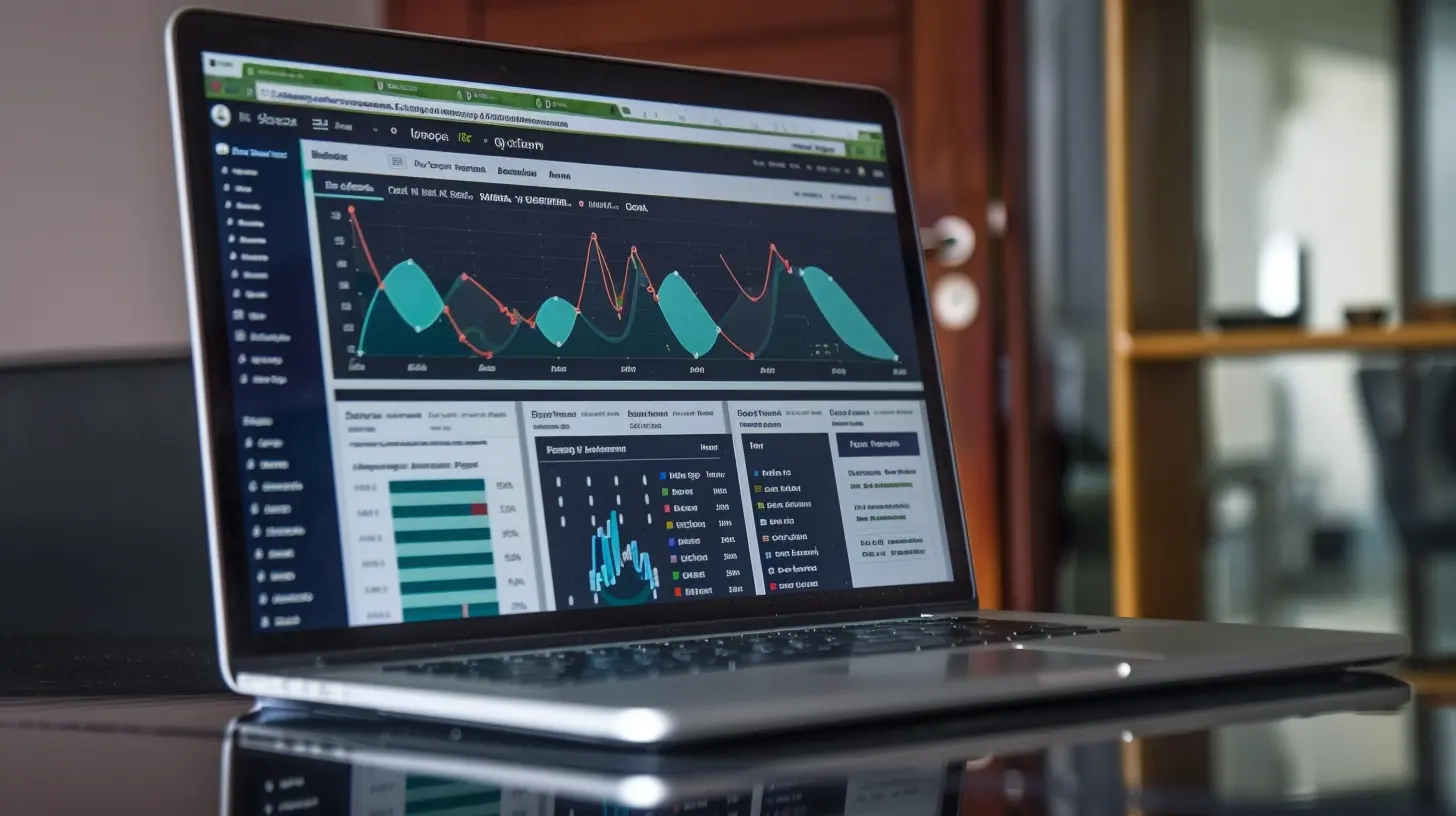24 January 2025
In today’s world, where data is king, it’s no surprise that analytics can play a huge role in driving business success. But guess what? It’s not just for monitoring customer behavior or maximizing sales. Nope! Analytics can actually be a game-changer for another crucial aspect of your business—your employees. Yep, I’m talking about using analytics to boost employee productivity and engagement. Sounds interesting? Let’s dive in!
Understanding the Power of Analytics in the Workplace
Before we get into the nitty-gritty of how to use analytics, let’s take a moment to understand why it even matters. Think of analytics as your business crystal ball. It gives you insights into what’s working and what’s not. Just like you’d check your car dashboard for speed and fuel levels, workplace analytics tells you how your employees are performing, what’s slowing them down, and what keeps them motivated. Pretty cool, right?And here’s the kicker: By leveraging analytics, you’re not just improving productivity; you’re also creating an environment where employees feel heard, valued, and, most importantly, engaged. After all, happy employees = happy customers = a thriving business. I mean, who doesn’t want that?
Why Employee Productivity and Engagement Matter
First things first. Why should you care about productivity and engagement? Well, let’s break it down.- Productivity is all about how efficiently your employees get stuff done. More productive employees mean faster results, higher quality work, and, ultimately, bigger profits.
- Engagement, on the other hand, is about how connected your employees feel to their work and your company. Engaged employees are passionate, proactive, and committed to the company’s mission. In short, they’re your secret weapon.
Now, combine these two, and you’ve got yourself a dream team that not only meets but exceeds expectations. The million-dollar question is: How can analytics help make this happen?
The Role of Analytics in Boosting Employee Productivity
Let’s get practical. Here’s how analytics can help you supercharge productivity in your workplace:1. Identifying Bottlenecks
Think about it. If your team were a racecar, analytics would be the pit crew pointing out what’s slowing it down. By analyzing workflows, communication patterns, and time spent on tasks, you can spot where things are getting stuck. Whether it’s too many meetings (yes, we all know that pain) or a clunky tool that’s not pulling its weight, analytics helps you zero in on the problem areas.2. Setting Realistic Goals
Ever felt overwhelmed by unachievable goals? You’re not alone. Analytics lets you set goals based on actual data rather than gut feelings. By understanding past performance, you can set benchmarks that are challenging yet achievable. It’s like aiming for a target—you need to know where it’s positioned before you shoot.3. Measuring Productivity in Real Time
Here’s the thing—traditional performance reviews? They’re so last season. With analytics, you get real-time insights into how your team is doing. This means you can make adjustments on the fly rather than waiting for the quarterly review to figure out something’s off. Think of it like GPS for your team’s performance—it keeps you on track.
How Analytics Drives Employee Engagement
Now, let’s talk engagement. Because, let’s face it, productivity without engagement is like bread without butter—it’s just dry and uninspiring.1. Understanding What Motivates Employees
Not everyone’s driven by the same thing. Some people thrive on recognition, while others are fueled by learning opportunities or financial incentives. Analytics helps you figure out what makes your team tick. By analyzing feedback surveys, sentiment scores, and engagement metrics, you can tailor your approach to meet individual needs. It’s like being a DJ who knows exactly what track to play to keep the crowd dancing.2. Creating a Feedback Loop
Nobody likes shouting into the void, right? Employees want to know their input matters. Analytics can make this happen. By analyzing feedback trends and acting on them, you’re creating an environment where employees feel their voices are heard. And when people feel heard, they’re more likely to stick around and give their best.3. Improving Work-Life Balance
Overworked employees = disengaged employees. Simple math, really. Analytics tools can monitor things like overtime, workloads, and stress levels. This way, you can identify when someone’s on the verge of burnout and step in before it’s too late. Think of it as the smoke alarm for your workplace—it warns you before things go up in flames.Tools and Strategies for Implementing Analytics
Alright, so now you’re sold on the idea of using analytics. But where do you even start? Don’t worry, I’ve got your back. Here are some tools and strategies to get the ball rolling:1. HR Analytics Software
There are tons of HR tools out there—like BambooHR, Workday, or SAP SuccessFactors—that are designed to track productivity, engagement, and everything in between. These platforms consolidate data into one place, making it easier for you to spot patterns.2. Pulse Surveys
Ever heard of pulse surveys? They’re quick, frequent surveys that capture how your employees are feeling in real time. Imagine it like a quick check-up for your team’s morale and engagement levels.3. Employee Monitoring Tools
Now, let me be clear: We’re not talking about creepy surveillance here. Employee monitoring tools like Hubstaff or Time Doctor provide insights into how time is being spent without crossing any ethical lines. It’s about improving efficiency, not micromanaging.4. Data Visualization Tools
Data can be overwhelming, but tools like Tableau or Power BI turn all those numbers into visual insights that are easy to digest. Trust me, a colorful chart beats a spreadsheet full of numbers any day.Challenges to Watch Out For
Now, let’s be real—implementing analytics isn’t all sunshine and rainbows. There are a few bumps you might hit along the way. Here’s what to watch out for:1. Privacy Concerns
Nobody likes feeling like Big Brother is watching. Be upfront with your employees about what data is being collected and how it will be used. Transparency goes a long way in building trust.2. Data Overload
Let’s not forget the classic “too much of a good thing” adage. With so much data at your fingertips, it’s easy to feel overwhelmed. The key? Focus on the metrics that actually matter to your goals.3. Implementation Costs
Yeah, some of these tools can be pricey. But think of it as an investment. The boost in productivity and engagement will pay off in the long run. Plus, there are free or budget-friendly options to explore if you’re just starting out.Tips for Making Analytics Work for Your Business
Okay, now for the fun part—putting analytics into action. Here are some tips to make sure your efforts actually pay off:- Start Small: Don’t try to do everything at once. Pick a specific area (like productivity or engagement) and focus your efforts there first.
- Get Buy-In from Employees: Involve your team in the process. Explain why you’re using analytics and how it benefits them.
- Keep it Human: At the end of the day, data is just a tool. Use it to guide decisions, but don’t lose sight of the human aspect of your workforce.
- Iterate and Improve: Analytics isn’t a one-and-done deal. Keep refining your approach based on what the data tells you.
Wrapping It Up
So, there you have it—analytics isn’t just a buzzword; it’s a powerful tool that can transform how your business operates. By leveraging data to boost productivity and engagement, you’re not just improving numbers on a spreadsheet; you’re creating a workplace where employees thrive.Remember, the goal isn’t just to work harder—it’s to work smarter. And with analytics in your toolkit, you’ll be well on your way to building a more productive, engaged, and happier workforce.











Lark Lamb
Leverage analytics to identify productivity trends and engagement levels within your workforce. Utilize these insights to tailor training, improve communication, and foster a positive work environment, ultimately driving both employee satisfaction and overall organizational performance.
February 23, 2025 at 4:49 AM